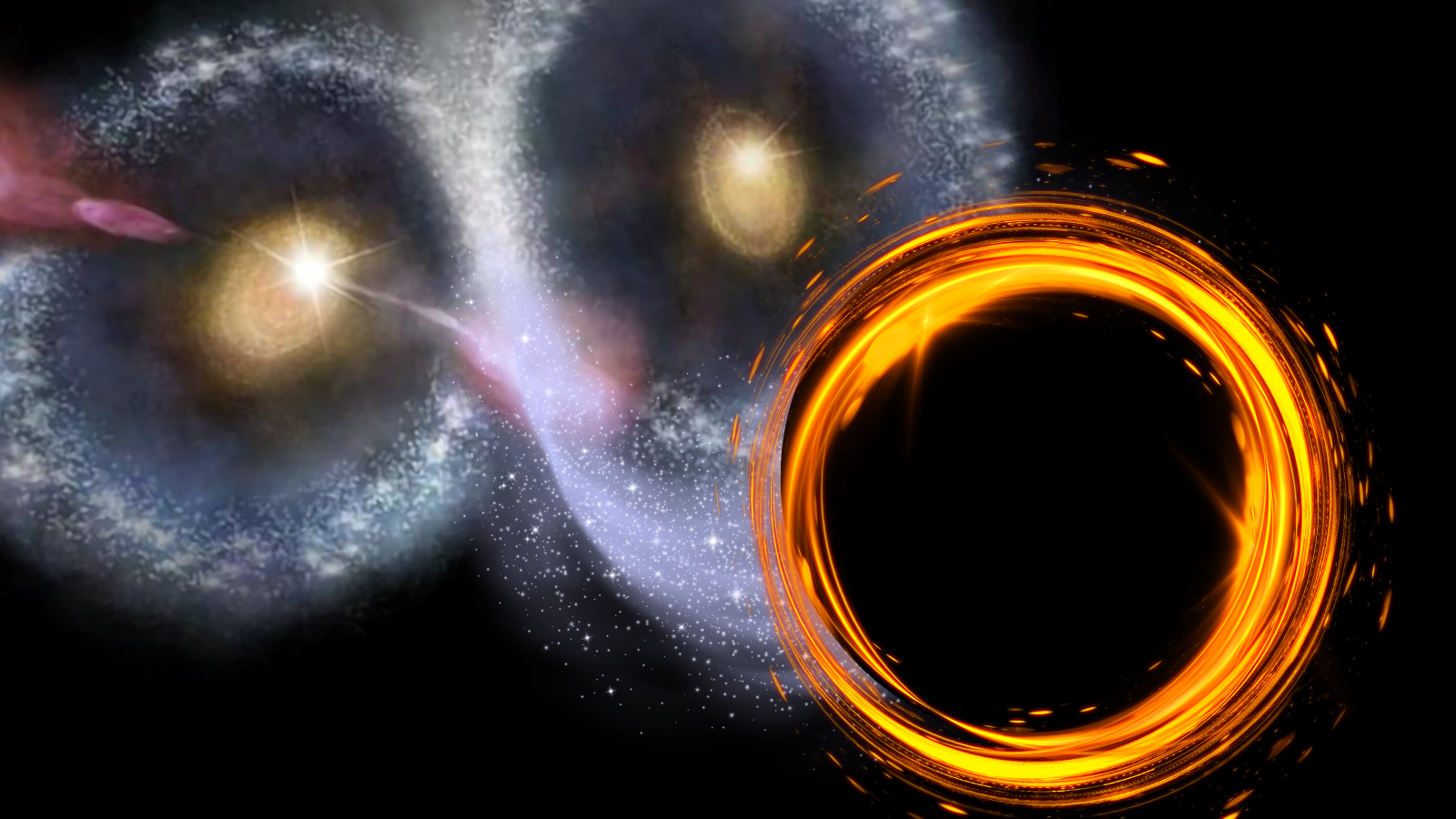Why is the speed of light the way it is?

It's just plain weird.

Paul M. Sutter is an astrophysicist at SUNY Stony Brook and the Flatiron Institute, host of Ask a Spaceman and Space Radio, and author of "How to Die in Space." He contributed this article to Space.com's Expert Voices: Op-Ed & Insights.
We all know and love the speed of light — 299,792,458 meters per second — but why does it have the value that it does? Why isn't it some other number? And why do we care so much about some random speed of electromagnetic waves? Why did it become such a cornerstone of physics?
Well, it's because the speed of light is just plain weird.
Related: Constant speed of light: Einstein's special relativity survives a high-energy test
Putting light to the test
The first person to realize that light does indeed have a speed at all was an astronomer by the name of Ole Romer. In the late 1600s, he was obsessed with some strange motions of the moon Io around Jupiter. Every once in a while, the great planet would block our view of its little moon, causing an eclipse, but the timing between eclipses seemed to change over the course of the year. Either something funky was happening with the orbit of Io — which seemed suspicious — or something else was afoot.
After a couple years of observations, Romer made the connection. When we see Io get eclipsed, we're in a certain position in our own orbit around the sun. But by the next time we see another eclipse, a few days later, we're in a slightly different position, maybe closer or farther away from Jupiter than the last time. If we are farther away than the last time we saw an eclipse, then that means we have to wait a little bit of extra time to see the next one because it takes that much longer for the light to reach us, and the reverse is true if we happen to be a little bit closer to Jupiter.
The only way to explain the variations in the timing of eclipses of Io is if light has a finite speed.
Breaking space news, the latest updates on rocket launches, skywatching events and more!
Making it mean something
Continued measurements over the course of the next few centuries solidified the measurement of the speed of light, but it wasn't until the mid-1800s when things really started to come together. That's when the physicist James Clerk Maxwell accidentally invented light.
Maxwell had been playing around with the then-poorly-understood phenomena of electricity and magnetism when he discovered a single unified picture that could explain all the disparate observations. Laying the groundwork for what we now understand to be the electromagnetic force, in those equations he discovered that changing electric fields can create magnetic fields, and vice versa. This allows waves of electricity to create waves of magnetism, which go on to make waves of electricity and back and forth and back and forth, leapfrogging over each other, capable of traveling through space.
And when he went to calculate the speed of these so-called electromagnetic waves, Maxwell got the same number that scientists had been measuring as the speed of light for centuries. Ergo, light is made of electromagnetic waves and it travels at that speed, because that is exactly how quickly waves of electricity and magnetism travel through space.
And this was all well and good until Einstein came along a few decades later and realized that the speed of light had nothing to do with light at all. With his special theory of relativity, Einstein realized the true connection between time and space, a unified fabric known as space-time. But as we all know, space is very different than time. A meter or a foot is very different than a second or a year. They appear to be two completely different things.
So how could they possibly be on the same footing?
There needed to be some sort of glue, some connection that allowed us to translate between movement in space and movement in time. In other words, we need to know how much one meter of space, for example, is worth in time. What's the exchange rate? Einstein found that there was a single constant, a certain speed, that could tell us how much space was equivalent to how much time, and vice versa.
Einstein's theories didn't say what that number was, but then he applied special relativity to the old equations of Maxwell and found that this conversion rate is exactly the speed of light.
Of course, this conversion rate, this fundamental constant that unifies space and time, doesn't know what an electromagnetic wave is, and it doesn't even really care. It's just some number, but it turns out that Maxwell had already calculated this number and discovered it without even knowing it. That's because all massless particles are able to travel at this speed, and since light is massless, it can travel at that speed. And so, the speed of light became an important cornerstone of modern physics.
But still, why that number, with that value, and not some other random number? Why did nature pick that one and no other? What's going on?
Related: The genius of Albert Einstein: his life, theories and impact on science
Making it meaningless
Well, the number doesn't really matter. It has units after all: meters per second. And in physics any number that has units attached to it can have any old value it wants, because it means you have to define what the units are. For example, in order to express the speed of light in meters per second, first you need to decide what the heck a meter is and what the heck a second is. And so the definition of the speed of light is tied up with the definitions of length and time.
In physics, we're more concerned with constants that have no units or dimensions — in other words, constants that appear in our physical theories that are just plain numbers. These appear much more fundamental, because they don't depend on any other definition. Another way of saying it is that, if we were to meet some alien civilization, we would have no way of understanding their measurement of the speed of light, but when it comes to dimensionless constants, we can all agree. They're just numbers.
One such number is known as the fine structure constant, which is a combination of the speed of light, Planck's constant, and something known as the permittivity of free space. Its value is approximately 0.007. 0.007 what? Just 0.007. Like I said, it's just a number.
So on one hand, the speed of light can be whatever it wants to be, because it has units and we need to define the units. But on the other hand, the speed of light can't be anything other than exactly what it is, because if you were to change the speed of light, you would change the fine structure constant. But our universe has chosen the fine structure constant to be approximately 0.007, and nothing else. That is simply the universe we live in, and we get no choice about it at all. And since this is fixed and universal, the speed of light has to be exactly what it is.
So why is the fine structure constant exactly the number that it is, and not something else? Good question. We don't know.
Learn more by listening to the episode "Why is the speed of light the way it is?" on the Ask A Spaceman podcast, available on iTunes and on the Web at http://www.askaspaceman.com. Thanks to Robert H, Michael E., @DesRon94, Evan W., Harry A., @twdixon, Hein P., Colin E., and Lothian53 for the questions that led to this piece! Ask your own question on Twitter using #AskASpaceman or by following Paul @PaulMattSutter and facebook.com/PaulMattSutter.

Paul M. Sutter is a cosmologist at Johns Hopkins University, host of Ask a Spaceman, and author of How to Die in Space.


